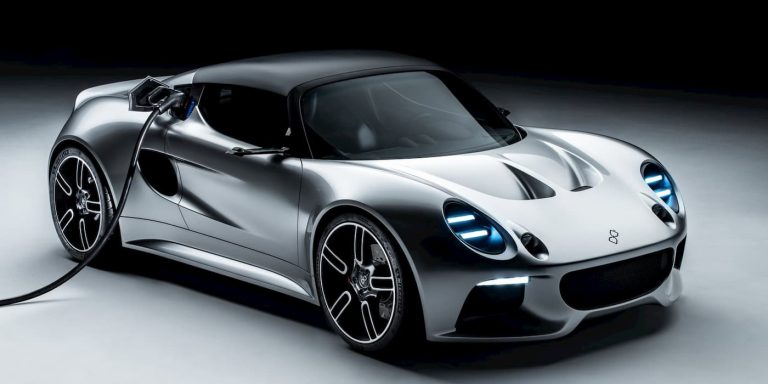The legendary Lotus Elise is going electric. Well, sort of. The designer behind the original Lotus Elise S1, Julian Thomson, teamed up with Nyobolt and CALLUM to create a Lotus Elise-inspired lightweight electric sports car with ultra-rapid charging (100% in under six minutes).
Based in Cambridge, England, Nyobolt is a tech startup focusing on high-performance battery and charging technology to cut lengthy charge times.
The company revealed its first concept vehicle Tuesday, a Lotus Elise-inspired sporty EV designed by Julian Thompson. A 35 kWh battery powers the electric sports car that can charge to 100% in under six minutes, a new record according to the company.
Sai Shivareddy, CEO at Nyobolt, stated:
Unlocking the challenges faced by electric vehicle designers has been key to the development of our breakthrough fast-charging batteries. Previously, enabling a light weight fast-charging vehicle was not possible without compromising its lifetime and so people have been relying on costly and large battery packs in the vehicle. With our unique technology we have achieved a six-minute charge car, and developed smaller battery packs that can deliver more power and charge in less time.
Nyobolt said many of the electric cars on the road today are big, requiring more battery materials that drive the cost up.
To overcome this, the company is introducing new smaller, lightweight battery tech. Nybolt claims with the EV weighing “closer to one tonne than two,” the Lotus Elise-inspired electric car will have a range of up to 155 miles (250 km).
Nybolt’s engineers have tested its batteries over 2,000 fast charge cycles “without significant performance loss,” which the company claims paves the way for lightweight, ultra-efficient EVs.
Meanwhile, the company claims its battery tech is not limited to small batteries. It can also make larger packs designed for trucks or buses.
Working on the design, Thompson invited a British design and engineering firm, CALLUM, to help bring the concept to life.
Nyobolt and CALLUM addressed each element that goes into the EV, including materials, cells, the drivetrain, and the vehicle as a whole.
You can clearly see the original Lotus Elise S1’s markings all over the EV’s design, including the silhouette and body lines. However, it does have a modern spin with new LED lights and a revamped back-end.
The company says its ready-to-deploy tech will go into production in early 2024 and is capable of immediate application that can be rapidly scaled.
FTC: We use income earning auto affiliate links. More.
You’re reading Electrek— experts who break news about Tesla, electric vehicles, and green energy, day after day. Be sure to check out our homepage for all the latest news, and follow Electrek on Twitter, Facebook, and LinkedIn to stay in the loop. Don’t know where to start? Check out our YouTube channel for the latest reviews.
This content was originally published here.
